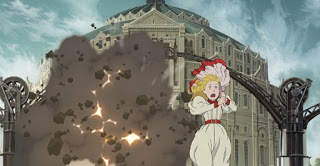Steamboy
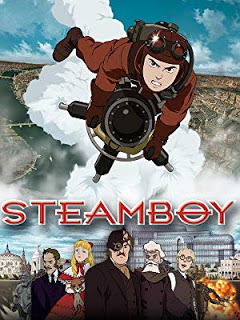
Year: 2005
Director: Katsuhiro Otomo
Rating: 8/10
The Version is the 126 minute one in English.
A much shorter one was released in American theaters.
I, perhaps too often, complain about the
unpleasing - to my eye - aesthetics of American animation of the past 10-15
years. The Disney product in particular. I hate the look of it – it is cookie
cutter computer generated hack work. When you read the reviews of them it
is all about the story, characters and dialogue (which can all be quite good)
but rarely a mention of the actual animation. This lack of artistic aesthetics
is probably due to simple commercial concerns – one of the prime segments
of the audience are children who could care less and the company wants to
churn out a few of these a year because they make gobs of money. This is
in comparison to other animation from around the world – such as the remarkable
Loving Vincent or the subversive Tehran Taboo or enchanting The Tale of the
Princess Kaguya. All beautifully drawn animation using various creative styles.
For adults.
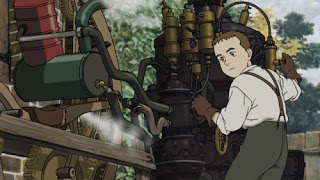
Steamboy is a remarkably ambitious animation
that is at times dazzling in its imaginative flights of fancy. It was ten
years in the making from the man who created Akira, Katsuhiro Otomo, with
over 180,000 drawings. It is really astonishing to think about. And it is
all there to be seen on the screen with panels filled with detail, so much
movement at the same time and a beautiful recreation of Victoria England.
Yes, it may seem an odd choice for a Japanese animator to place his story
in England during the 1800’s but that along with the technical aspects of
the film places it into the Steampunk genre of science fiction – literature
or film.
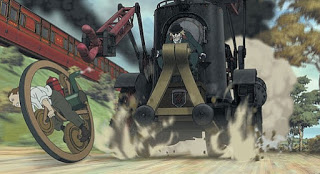
The film does admittedly go on for too
long and its frantic and frenetic action is almost too much to take in but
it is in its way an epic animation. The first 30-minutes are breathtaking
as we are introduced to the setting – Manchester, England – during the Industrial
Revolution brought about by the invention and usage of steam power. It changed
everything. It brought along with it enormous wealth for some; dire poverty
for many more; extreme capitalism, a division between the rich and poor,
a migration from rural life to urban living, radical politics and ideas,
the fate of nations, faster transportation and other inventions that followed
that rapidly changed the way we live. Many historians consider the Industrial
Revolution a landmark and divide in the human race. Technology began to dominate
everything over time. And still does.
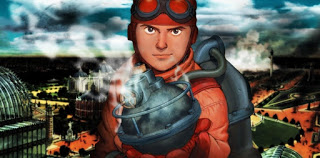
The year is 1851 with the Crystal Palace
Exhibition in London to soon take place. This was organized by Price Albert
(husband to Queen Victoria and father to all her many offspring who were
to rule Europe) to bring all the most recent technical advances from all
over the world in one place for people and nations to learn from one another.
He was an idealist. Back in Manchester Ray Steam receives a package from
his grandfather who he has not seen in many year as both he and Ray’s father
have been off in search for an element that can increase steam power dramatically.
Inside the package is the Steam Ball that can do this.
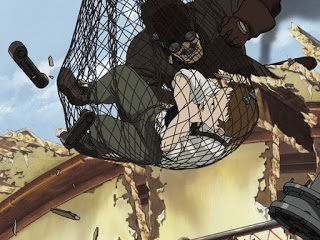
But the evil O’Hara Corporation wants it
too in order to create a new age of weapons and from that point on it is
a grand series of Ray escaping from them, being kidnapped by them, being
reunited with his father who has gone to the dark side, escaping again and
so on with a constant barrage of steam powered devices that allow one to
fly, trains that can traverse without tracks, submarines, steam troopers
(very similar to storm troopers) and an instrument of terror that can freeze
a city. All very cool. The film is grounded though in the generational conflict
– the grandfather who sees the terrible side of this technology, his son
who has gone mad with ambition and thinks of science as a God and the young
boy who has love and loyalty to both but has to choose where to stand.






